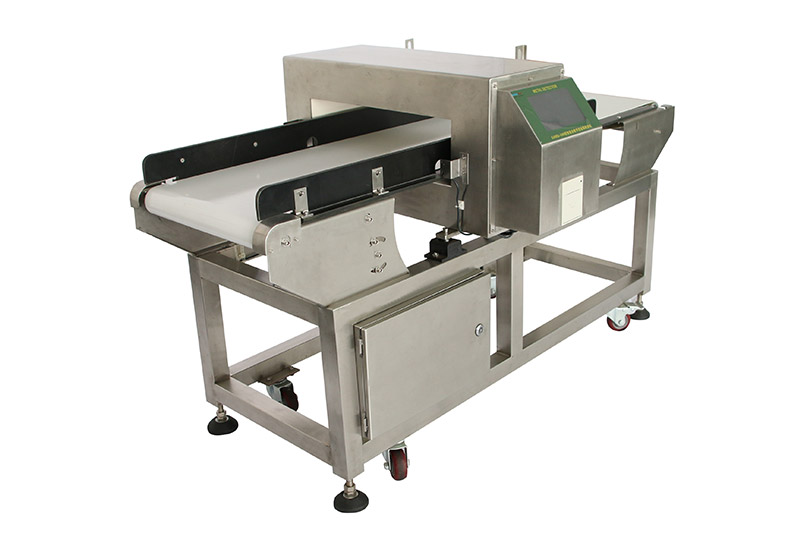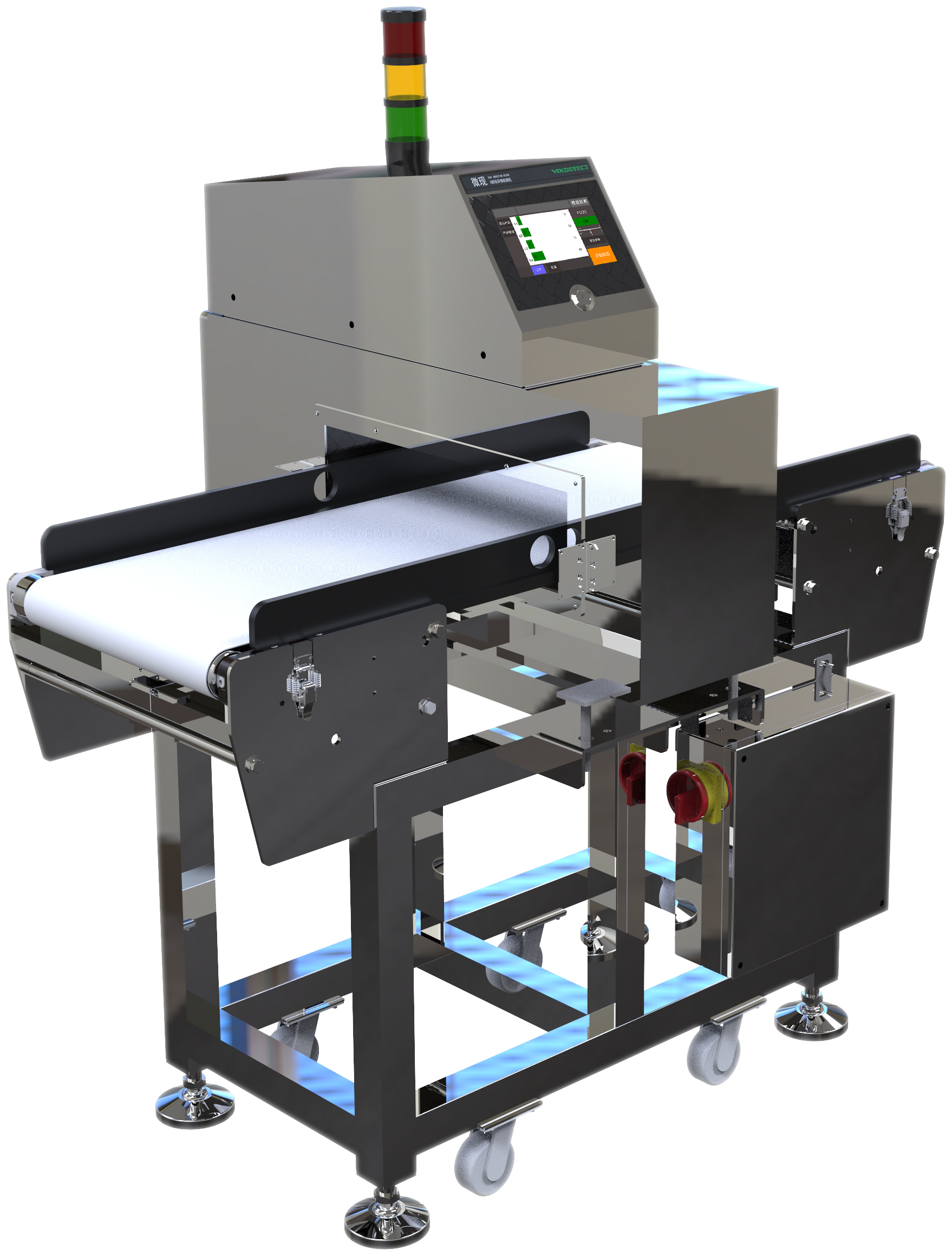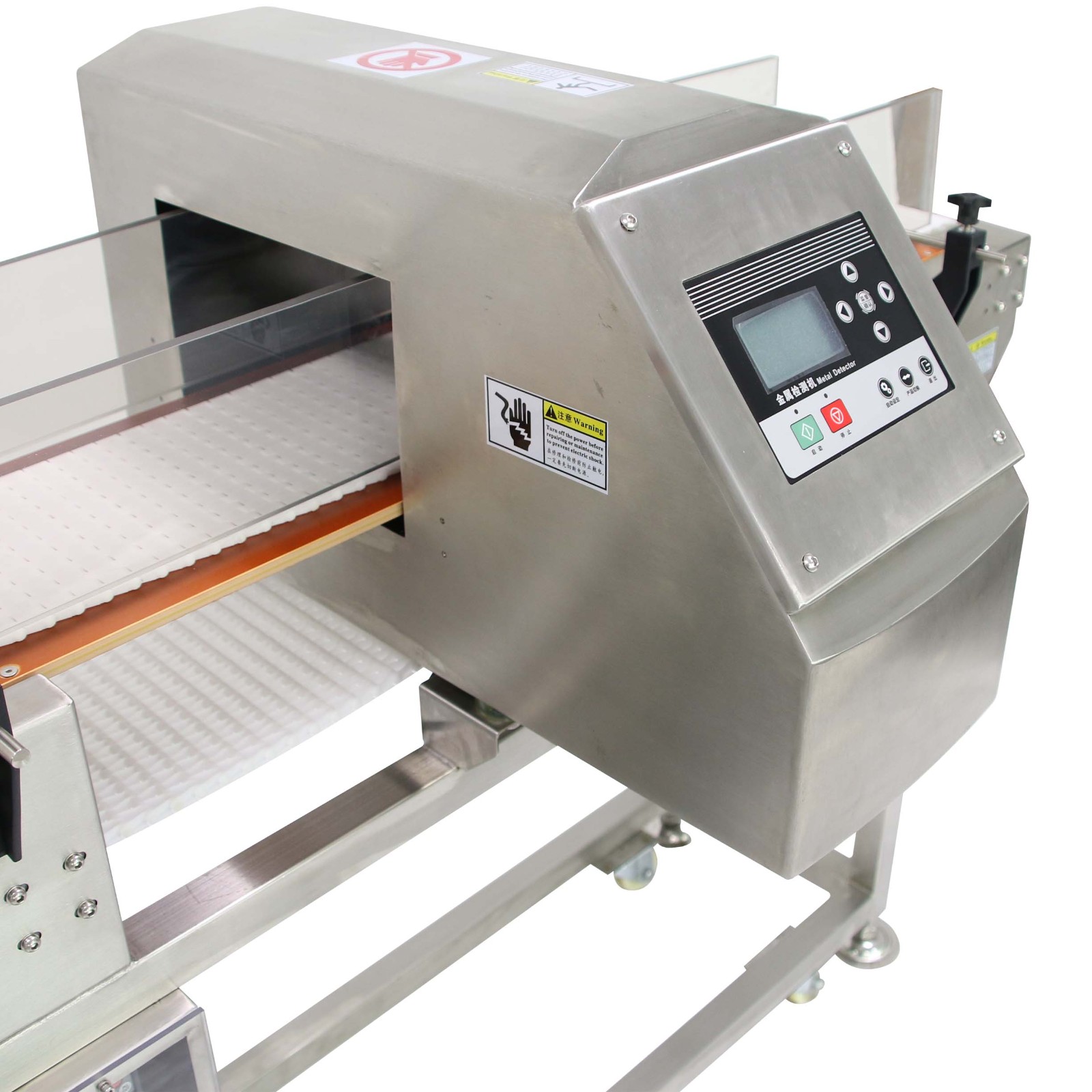Automatic reject Conveyorized Metal Detector System
Automatic reject Conveyorized Metal Detector SystemSale inline automatic metal detector with rejection system
With increased focus on quality and the avoidance of contamination, the metaldetectorhas become a critical inspection tool.
With increased focus on quality and the avoidance of contamination, the metaldetectorhas become a critical inspection tool. A metaldetectoris a sophisticated piece of equipment used to detect metalcontamination in product. When properly installed and operated, it will help improve product quality.
Proper training and education on metaldetectorsis a key to proper installation. A topic that creates countless hours of training and numerous service calls is product rejection.False rejects,false positives, constant rejectingand kickouts are all terms used in describing metaldetectorsreacting to a change.
There are two types of reactions: the first causes the product to be ejected from the production line. The most common reason for this type of reaction is because there is metal contamination found in the product. Companies that are new to metal detection are often amazed when a detector finds metalin their product. In fact, some don't even believe they may have a contamination issue. The second type of reaction occurs when the detector reacts without anything going through it. Often referred to as a false reject, this can create a loss of confidence in the metal detector.
Prior to purchasing a metal detection system, proper research and product testing is the first way to reduce false rejects. When creating a metal detection system for a company, typically the vendor requests that the product is sent to be tested. Product factors like product temperature, line speed, core temperature for frozen food, and product alignment on the conveyor, must be considered in a proper test. This test provides a solution for the customer; creating detection sensitivities, metal specifications, and a specific metal detection system.
The vendor should offer a test lab specifically for this purpose operated by product test specialists using multiple detectors of various sizes and frequencies.
It is always advisable for customers that request product testing, to review the results from all vendors and look for consistency in the sensitivities. Detectors can be set to meet a particular specification, however, if they run for long periods of time in a production environment they might cause false rejectsor erratic operation. A reputable vendor will always provide the customer with a detailed "Sensitivity Statement" that guarantees the sensitivity of the detector. In some cases, the statement will clearly state that their specifications are beyond the limits of the metaldetector.
Long periods without false rejects are the key distinguishing factor of a top-quality metal detector. Improper installations can cause false rejects. In some cases, a quality metal detector can be mounted on a conveyor that is not designed for metal detection. This will create false rejects as a common problem. An incorrectly designed conveyor structure, reject device or even an improperly installed unit can cause interference signals from ground loops. A modification, like the addition of a belt scraper, if it is not properly isolated, can cause false rejects. These problems typically result in service visits and eventually, the problem is resolved, but not after service costs and lost production time. Education and training will eliminate these service costs and lost production time.
False rejectscan also be caused by influences beyond the metal detection system. Hand-held radios and cell phones are typical sources of interference. Other interference sources are variable frequency drives, however they will make the detectoract erratic vs. a random false reject. Quality equipment will address these interference issues with specialized frequency filters. A common source of false detection is static discharge, found in gravity feed systems, pipelines and conveyors. Static discharge is not typically random but more of a timed trigger. By integrating a conductive plastic to dissipate the static, manufacturers of metal detection equipment can eliminate this problem.
The last area that can cause false rejectsis conveyor belt contamination. The conveyor belt can be contaminated from weld slag, small pieces of wire, or even used grease. Precautions should be taken when working around metal detection systems to prevent belt contamination.
It is important to remember that simply having a metal detector on a production line, while providing a measure of protection, will never replace an all-inclusive contamination detection plan. Proper procedures and training must be integrated into the everyday production cycle to ensure a contaminant-free workplace.
The metal detector is the most important part of a conveyor system. It has to be able to differentiate between metals and non-metals, and it has to be able to reject metals that shouldn't go through.
We have a metal detector that can do just that: it's stainless steel, which means it's durable enough to last for years of use but also easy on the eyes. It will help you detect all kinds of different metals—including stainless steel!
And don't worry about how much space your equipment needs—this metal detector is small enough to fit in your pocket!
Conveyorized inline automatic conveyor belt metal detector with rejection system
Our metal detection system is the perfect solution for your conveyor system. It features a stainless steel detection zone that can be integrated into your existing liner design, making it easy to retrofit. Our metal detectors are designed to detect small amounts of solid metal, and they're specifically designed to work with our conveyor systems. We offer several models that are suitable for different types of applications, so you can choose the right one for your needs.
Metal detection is a critical component of any conveyor system.
The Viking metal detector is the only metal detector that can detect stainless steel, in addition to other metals. Our conveyor belt metal detectors are designed to allow you to keep moving while they do their job, making sure that your product comes through with no issues.
We offer a variety of options for our customers, including:
* Conveyor belt metal detectors for high-precision applications
* Conveyor belt metal detectors for low-precision applications
* Automatic inline metal detectors for use in tight spaces
If you would like to learn more about what we can do for you or how we can help your business, please fill out our contact form below!




